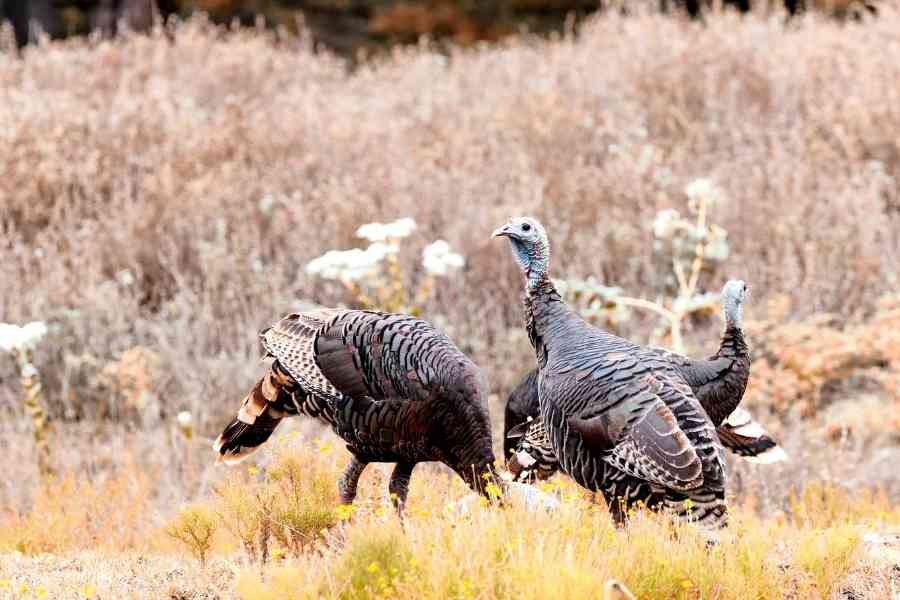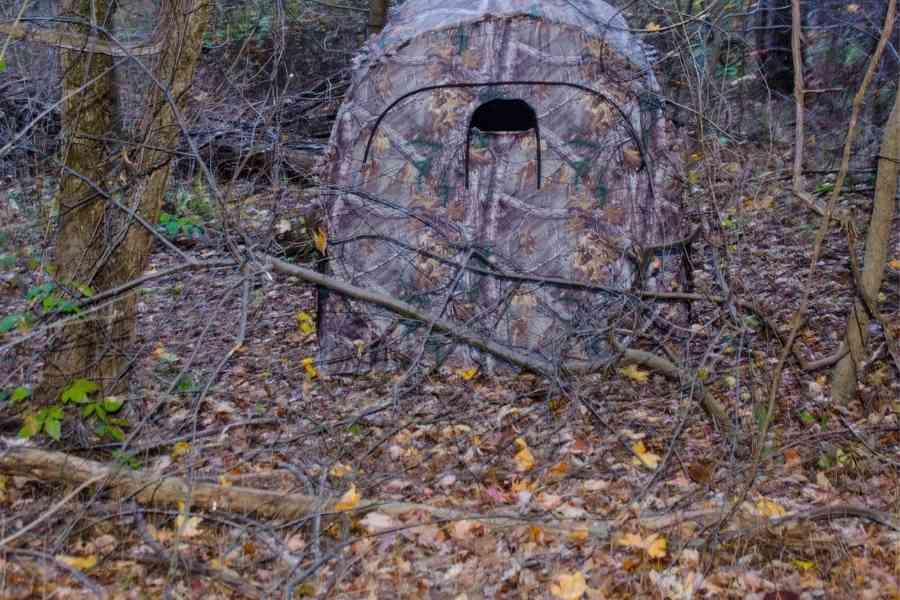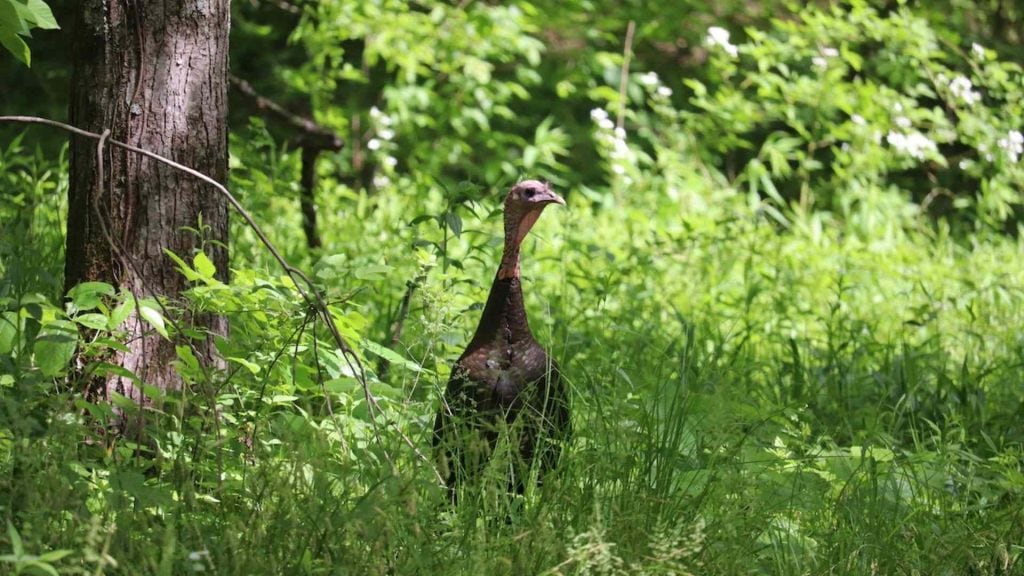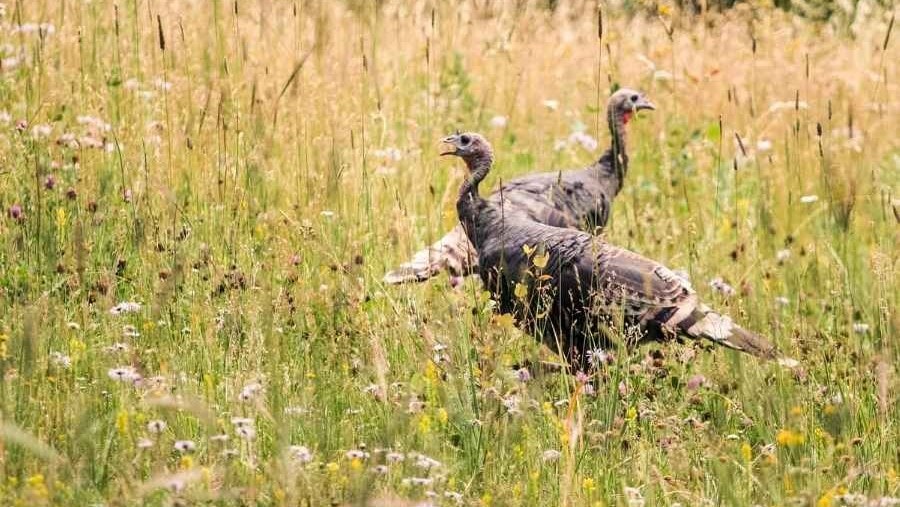When hunting turkey during the spring of the year, the weather is typically anything but predictable. Across much of the nation, turkey season is accompanied by persistent rain showers, which can often discourage those seeking to fill their tags.
Although hunting turkey in the rain certainly comes with its own inherent challenges, significant success can still be found by those with a sound strategy in mind.
TL;DR
Rainy weather can make turkey hunting challenging but successful hunts are possible. Turkeys become more active in rain, moving to fields to spot predators. Increase calling volume so they can hear you over the rain. Decoys help attract gobblers when calling is difficult. Hunt from a ground blind to stay dry and extend your time afield. Move to new locations under the cover of rain sounds. With the right gear and tactics, don’t let rain dampen your turkey hunting success.
By understanding how turkeys respond to different environmental factors, such as rainfall, a bowhunter can adapt and overcome in order to find a favorable outcome.
Contents (Jump to Topic)
ToggleThe following are several tips for turkey hunting in the rain, that every hunter can use to find success despite fighting the elements.
Open Areas Are Key

When hunting in, or directly following, a rain shower, there are few better places to be than overlooking a field favored by the turkeys of a given area.
Turkeys often flock to these fields in great numbers during wet weather, in turn, presenting a hunter with a greater than-average chance for success.
There are several schools of thought as to why turkeys favor open areas during rain showers. However, one of the most widely accepted theories is that this occurs as an instinctive response to avoid danger.
Turkeys, unlike many other game animals, have no defined sense of smell. In turn, this means that a turkey must rely heavily upon their senses of hearing and sight to alert them to danger.
In the rain, this becomes a problem, as the sound of falling rain muffles the sounds of approaching predators, and limbs sway about as rain falls from the treetop canopy.
In order to spot danger far more quickly, turkeys move to fields during rain showers, as they are provided an open view of their surroundings. This makes it much easier to spot predators from a distance.
read.. a group of turkeys are called
Adjust Volume As Needed
On rainy days, sound does not carry as far as it does on those days when all is calm. As rain pours down, and makes contact with the ground below, noise is produced.
This limits the distance at which your calls can be heard (even if you are using top-notch turkey calls), making it far more difficult to draw the attention of distant gobblers.
On rainy days, a hunter must often call louder than they would under normal circumstances. However, it can be beneficial to begin calling at standard volume, before cranking your calling volume to the next level.
This minimizes the risk of spooking unseen birds that are relatively close to your location.
Upon setting up at your hunting location, simply call as you typically would, and wait for a response. If there is no response to your calling, wait 10-15 minutes, and repeat your efforts at greater volume.
Additionally, it is worth keeping in mind that even after a turkey has been spotted, it will take a certain degree of effort on a hunter’s part to ensure that their calling can be heard.
Decoys Make A Difference
On rainy days, when it can be difficult for turkeys to hear a hunter’s calling, the use of decoys can pay dividends.
It is not uncommon for decoys to attract more turkeys than calling when hunting in inclement weather. This stems from the fact that an approaching gobbler can often spot a decoy at a far greater distance than they can hear a hunter’s calling.
As a general rule, 1-2 optimally positioned decoys will do the trick. Some of the most popular decoy arrangements include that of 1 hen, 1 hen/ 1 full strut gobbler, and 1 hen/ 1 jake.
Of these decoy setups, the 1 hen/1 full strut gobbler and 1 hen/ 1 jake arrangements work well to entice an aggressive response from dominant gobblers, even from great distances.
Most hunters position their decoys at a distance of 15-20 yards from their blind. This brings intrigued gobblers in close enough for easy shot placement, while still ensuring that any wary birds who hang up during their approach, are still within range.
A Blind Keeps You Hunting

The patience of even the most seasoned of hunters can wear thin when soaked to the bone by relentless rainfall.
This often forces an untimely retreat back to the comfort of home. However, you cannot kill a turkey from your couch, and the only way to find success is to be in the field whenever possible, no matter what mother nature has in store.
This is where the use of a quality ground blind is one of the most valuable of all strategies at a hunter’s disposal. Most ground blinds are relatively water-tight, keeping a hunter dry even in a downpour.
This keeps you in the field for a longer period of time, and drastically increases your chances of success.
Hunting from a ground blind also offers the distinct advantage of keeping your calls dry and in the best possible shape for use.
Calls such as box calls and slate calls require friction between two individual surfaces in order to work properly.
Excess moisture can quickly disrupt this friction, making it quite difficult to use these calls to any degree of success.
Let The Rain Shelter Your Movements
Despite proper scouting, we as turkey hunters often find ourselves watching from a distance as the turkeys we hunt skirt our setup, consistently avoiding harvest. In cases such as these, the best course of action is often to move to a different setup, which places us within close proximity to the birds we hunt.
On a dry, calm day, this can often be easier said than done. Turkeys employ a keen sense of sight and hearing to detect anything which might be out of place in their environment, and often pin down a hunter as they attempt to move to a new location.
However, the movement and sound created by falling rain neutralize much of this advantage.
If you determine that moving to another location would provide greater opportunity, do not hesitate when hunting through a rain shower.
As long as you can use the natural topography of the land to keep yourself out of a turkey’s line of sight, the sound of your movements will be muffled by the rain. This will allow you to get in place without spooking cautious turkeys.
Rainy Day Success
Do not fall victim to the misconception that rainy weather means poor turkey hunting. Not only can turkey hunting on rainy days be highly productive, but many experienced hunters often cite wet weather as being one of their favorite conditions to hunt in.
Here’s What You Need to Know:
In a more engaging and enjoyable manner, let’s explore those key takeaways that are both easy to read and unique. As we move through these paragraphs, you’ll notice the same number of breaks between them, ensuring a consistent flow of information.
Embarking on a turkey hunt can be an exciting adventure, but the weather can play a significant role in your success. A steady rain might present some difficulties for hunters, as the sound of raindrops can drown out turkey calls.
However, seasoned hunters argue that turkeys become more active on rainy days, searching for food in damp conditions.
To tackle the wet environment, a breathable rain jacket, and sturdy rubber boots are essential, keeping you dry and comfortable while you wait for the perfect shot.
Hunting near field edges during a rainstorm can be a smart move. Turkeys often look for shelter under trees or tall grass along these boundaries.
Mornings, when the birds are most active, can offer better chances of encountering them in heavy rain.

Though wet conditions can prove challenging, they can also present opportunities for a successful hunt if you know where to look and have the patience to wait for the right moment.
Springtime, when turkeys are in the throes of mating season, can make their behavior especially unpredictable.
They may remain active during sporadic rain showers, especially during this time of year. Wet brush and brush piles offer turkeys cover and a place to stay dry.
It’s crucial to keep an eye on weather patterns and adapt your hunting strategy as needed. If rain is accompanied by strong winds or gusts, turkeys may become more cautious, seeking shelter in protected areas.
In these situations, staying put and setting up in a hidden spot can improve your chances of a successful hunt.
Adapting to various weather conditions is vital when hunting in the rain, but it’s also important to consider how hot weather can affect turkey behavior, making them less active during the day.
Knowing how weather conditions influence turkey movements is key to a successful hunt.
Armed with quality rain gear and a solid understanding of turkey behavior in wet conditions, your chances of a fulfilling hunting experience will be greatly improved, whether you’re facing a light drizzle or heavy downpour.
Instead of becoming discouraged at the thought of less than ideal turkey hunting conditions, keep the above-mentioned tips in mind, and strive for success. With a little perseverance, you will fill your tags without much difficulty.






